Disclaimer: We sometimes use affiliate links in our content. For more information, visit our Disclaimer Page.
Nike, initially known as Blue Ribbon Sports, is undeniably the largest sportswear manufacturer globally, dominating the athletic footwear and apparel industry with its iconic Nike brand, innovative technology, and massive global market share. However, several top Nike competitors are giving the company a run for its money.
In this article, we will dive deep into the world of sports apparel, athletic and casual footwear, and sports equipment, as we explore the most formidable Nike rivals and their unique offerings.
Related: Nike SWOT Analysis
1. Adidas – The Arch-Nemesis

A Brief History
Adidas, the German sportswear brand, is one of the most popular sports brands globally and has been a competitor of Nike since its inception.
Founded in 1949, Adidas was initially a sports shoe company that later expanded into athletic apparel and equipment.
Today, the company is the second-largest sportswear manufacturer globally, capturing a significant market share in various segments, including professional sports jerseys, casual apparel, and lifestyle apparel.
Nike vs. Adidas
Adidas is often considered Nike’s main competitor, as both companies have a similar product range, target audience, and global market presence. In terms of brand value, both are among the most valuable brands in the world.
Adidas’s annual revenue is approximately 23.63 billion, while Nike boasts an annual revenue of around $50.62 billion. Nike and Adidas both invest heavily in digital marketing, brand building, and retail stores, with each having thousands of outlets worldwide.
Product Offerings
Unlike Nike, which primarily focuses on athletic footwear, Adidas has a more diversified product range, including fitness apparel, outerwear accessories, and sports equipment.
However, both companies are well-known for their sports shoes and running shoes, with Adidas’s Boost technology and Nike’s Air Max being notable innovations in the athletic footwear market.
Additionally, Adidas owns Reebok, another prominent player in the athletic footwear industry.
Related: Brand Loyalty: How to Create Lasting Connections with Customers
2. Puma – The Fast and Furious
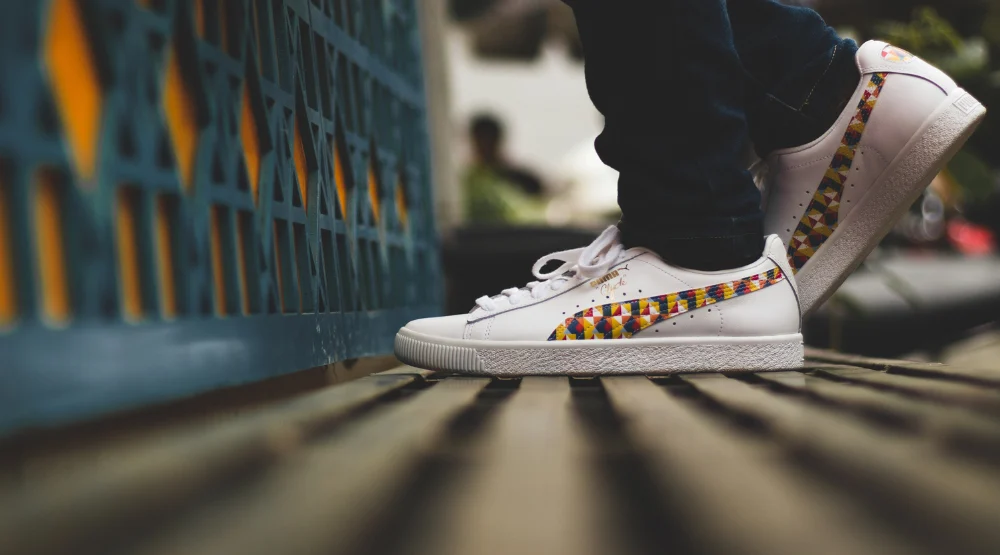
A Brief History
Puma, also a German sports apparel company, was founded in 1948 by Rudolf Dassler, brother of Adidas’s founder Adolf Dassler. The company initially focused on athletic footwear, with its first major breakthrough coming in the form of the “Atom” soccer cleats.
Puma’s annual revenue is approximately $8.89 billion, making it the third-largest sportswear manufacturer globally.
Nike vs. Puma
While Puma’s global market share may be significantly smaller than Nike’s, the brand is known for its innovative technology and strong collaborations, such as the partnership with Rihanna’s Fenty brand.
Puma has also made significant inroads in the lifestyle apparel and casual footwear segments, posing a challenge to Nike in these areas.
Product Offerings
Puma offers a wide range of products in the sports footwear, athletic apparel, and sports equipment categories. The company has also ventured into the women’s shoe company segment, with a focus on stylish and functional shoes for female athletes.
Puma’s product line includes popular sports brands such as Cobra Golf, Tretorn, and Volition America.
3. Under Armour – The Performance Powerhouse
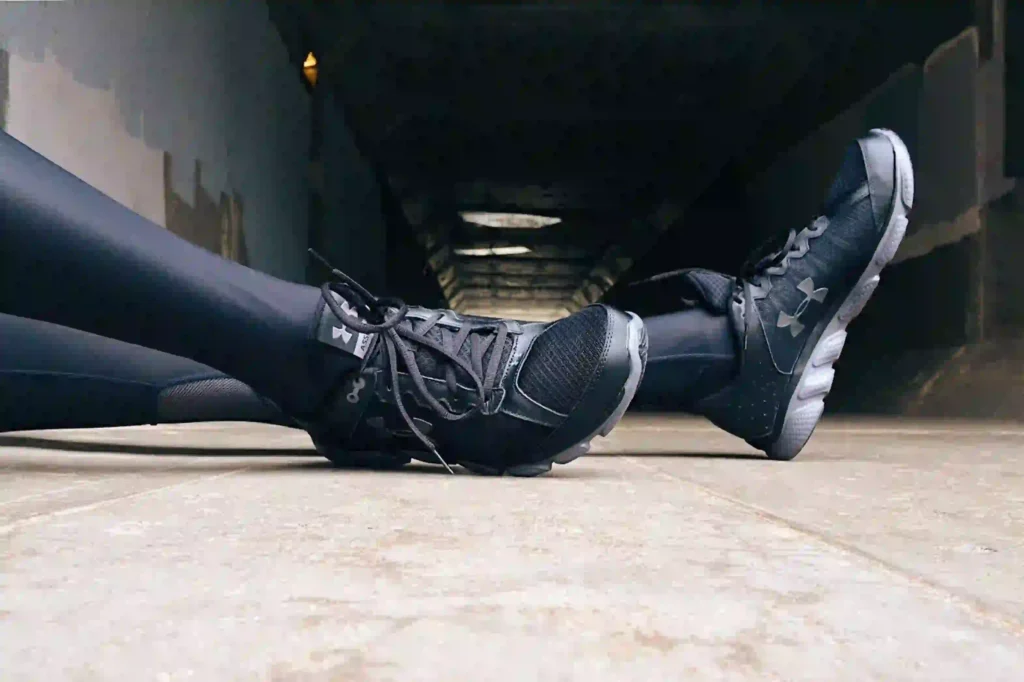
A Brief History
Under Armour, an American apparel company, was founded in 1996 by Kevin Plank, a former college football player. The company initially focused on moisture-wicking athletic apparel, eventually expanding into athletic footwear and sports equipment.
Under Armour’s annual revenue is approximately $5.80 billion, making it a formidable competitor in the athletic apparel and footwear market.
Nike vs. Under Armour
Under Armour has carved out a niche in the athletic apparel industry by focusing on performance and technology, unlike Nike, which has a broader product range.
The brand has gained popularity among athletes and fitness enthusiasts for its high-quality sports clothing and innovative designs.
However, Under Armour’s market share in the athletic footwear market is smaller compared to Nike’s.
Product Offerings
Under Armour offers a variety of products in the athletic apparel, sports footwear, and sports equipment categories.
The company’s innovative technologies, such as HeatGear and ColdGear, have set it apart from other brands in the market. Under Armour also offers outerwear accessories and fitness apparel for various sports, such as running, basketball, and golf.
Related: Top 9 Under Armour Competitors
4. New Balance – The All-American Favorite
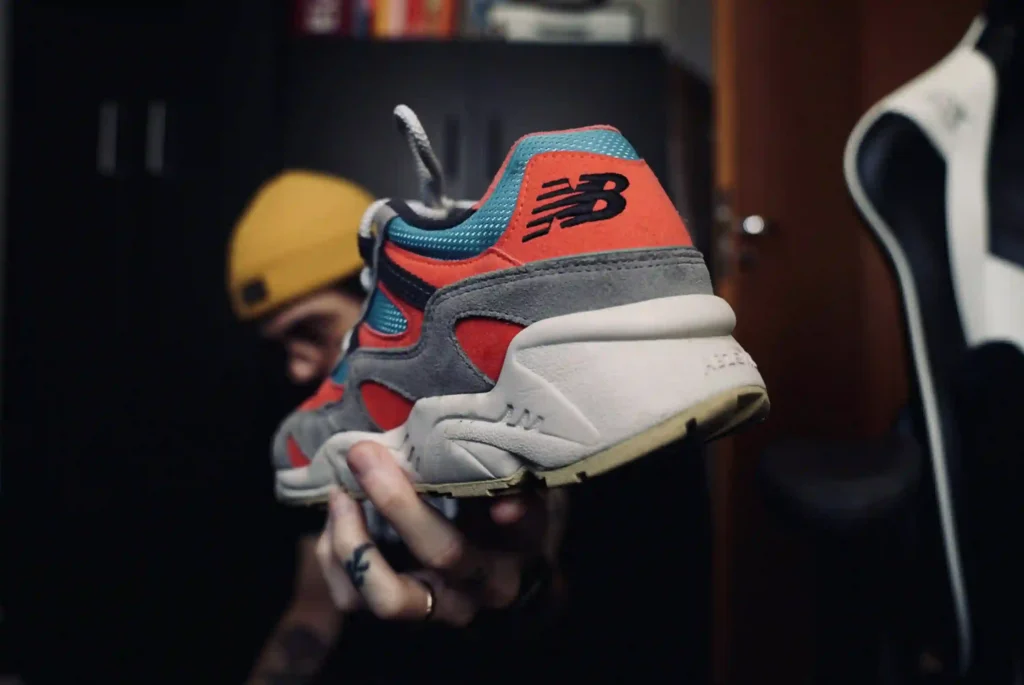
A Brief History
New Balance, an American footwear brand, was founded in 1906 by William J. Riley. Initially, the company focused on manufacturing arch supports and orthopedic shoes. It wasn’t until 1960 that New Balance released its first running shoe, the “Trackster.”
During 2022, New Balance achieved an annual revenue of approximately $5.3 billion, gaining recognition for its premium athletic footwear and casual wear offerings.
Nike vs. New Balance
New Balance has built a reputation for producing high-quality athletic footwear, especially running shoes, with a focus on comfort and fit. The brand’s commitment to manufacturing its products in the United States and the United Kingdom has earned it a loyal following.
While New Balance’s market share is smaller than Nike’s, the brand has a dedicated fan base and is considered a top competitor in the running shoe market.
Product Offerings
New Balance offers a wide range of products in the athletic footwear, athletic apparel, and sports equipment categories. The company is known for its high-quality running shoes, such as the 990 and Fresh Foam series.
New Balance has also expanded into lifestyle apparel, casual footwear, and outerwear accessories.
5. ASICS – The Science of Running
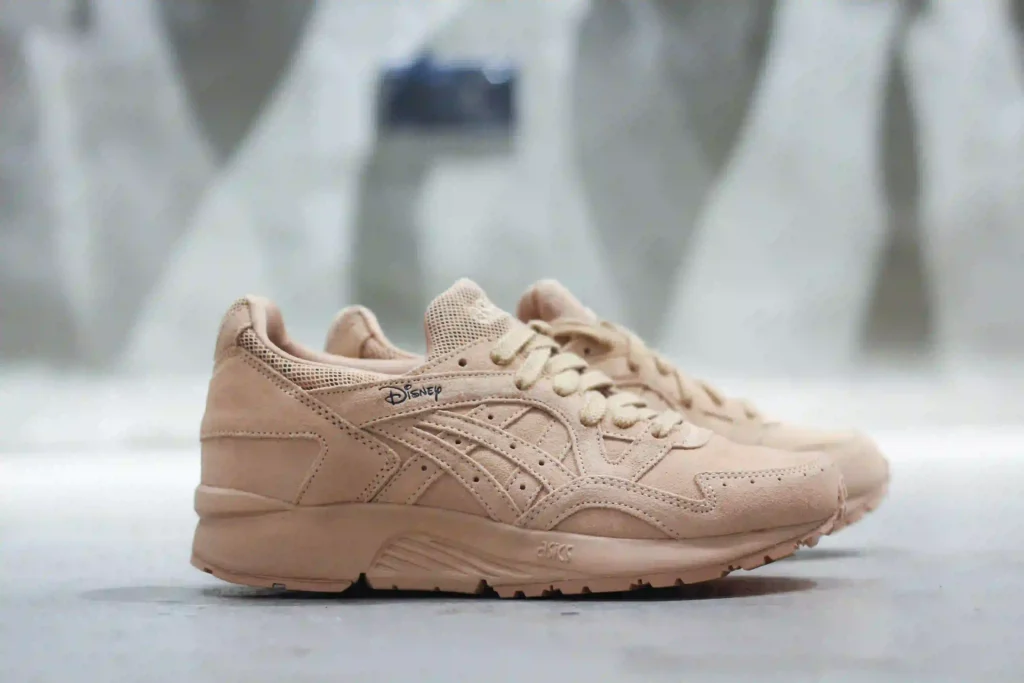
A Brief History
ASICS, a Japanese athletic footwear and apparel company, was founded in 1949 by Kihachiro Onitsuka. The company’s name is an acronym derived from the Latin phrase “Anima Sana In Corpore Sano,” which translates to “A Sound Mind in a Sound Body.” ASICS initially started as a basketball shoe company and later expanded into other sports.
Today, ASICS has an annual revenue of around $3.6 billion and is known for its focus on research and development in the athletic footwear industry.
Nike vs. ASICS
ASICS is considered one of the top Nike competitors in the running shoe market, with a strong focus on performance, fit, and comfort. The brand has built a reputation for its commitment to research and development, resulting in innovative technologies such as GEL cushioning and the Guidance Line system.
While ASICS’s market share is smaller than Nike’s, the brand is a favorite among serious runners and athletes.
Product Offerings
ASICS offers a variety of products in the athletic footwear, athletic apparel, and sports equipment categories. The brand is best known for its running shoes, such as the GEL-Kayano and GEL-Nimbus series.
ASICS also manufactures athletic apparel and outerwear accessories for various sports, such as tennis, volleyball, and wrestling.
6. Skechers – The Casual Contender
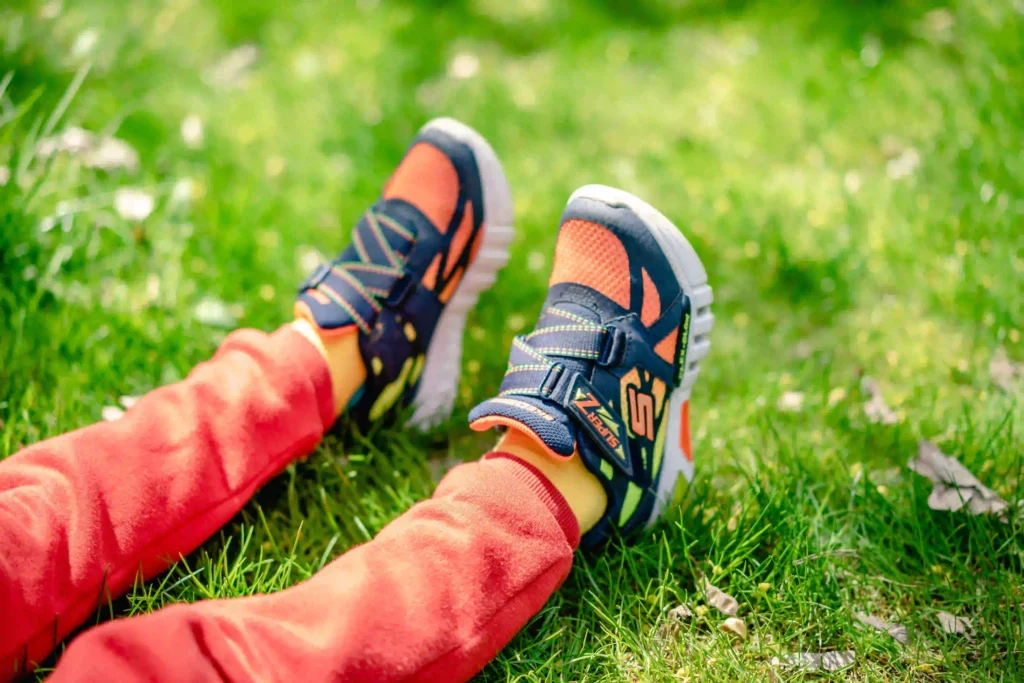
A Brief History
Skechers, an American footwear brand based in Manhattan Beach, California, was founded in 1992 by Robert Greenberg. Initially, the company focused on skate shoes and casual footwear, later expanding into the athletic footwear market.
In 2022, Skechers reached a significant milestone by reporting an all-time high in yearly sales, amounting to $7.4 billion. The brand is recognized as a major player in both the casual and athletic footwear segments.
Nike vs. Skechers
Skechers has carved out a unique position in the market by focusing on casual and lifestyle footwear, as well as affordable athletic shoes.
While the brand’s market share in the athletic footwear market is smaller than Nike’s, Skechers has managed to establish a strong presence in the casual footwear and walking shoe categories. The brand’s emphasis on comfort and affordability has attracted a loyal customer base.
Product Offerings
Skechers offers a wide range of products in the athletic footwear, casual footwear, and lifestyle apparel categories.
The company’s product lineup includes popular lines such as Skechers GOrun for running shoes, Skechers GOwalk for walking shoes, and Skechers Street for casual and fashion-forward footwear. Skechers also offers apparel and accessories, such as outerwear, socks, and bags.
7. Columbia Sportswear – The Outdoor Specialist
A Brief History
Columbia Sportswear, an American apparel and footwear company, was founded in 1938 by Paul Lamfrom. The company initially started as a hat distributor, later expanding into outerwear and sports equipment.
In the year 2022, Columbia Sportswear recorded an annual revenue of nearly $3.5 billion, solidifying its position as a premier source for top-grade outdoor clothing and equipment.
Nike vs. Columbia Sportswear
Columbia Sportswear is a top competitor in the outdoor apparel and footwear market, with a strong focus on innovation and technology. The brand’s commitment to providing high-quality, durable products for outdoor enthusiasts sets it apart from Nike, which has a broader product range and target audience.
While Columbia’s market share in the athletic footwear market is smaller than Nike’s, the brand is a leader in the outdoor apparel and equipment segment.
Product Offerings
Columbia Sportswear offers a variety of products in the outdoor apparel, footwear, and equipment categories. The company is known for its innovative technologies, such as Omni-Heat and OutDry, which are used in its outerwear and footwear products.
Columbia’s product lineup includes jackets, pants, footwear, and accessories for activities such as hiking, skiing, and fishing.
8. VF Corporation – The Apparel Conglomerate
A Brief History
VF Corporation, an American apparel and footwear company, was founded in 1899 as the Reading Glove and Mitten Manufacturing Company. The company later changed its name to Vanity Fair Mills and expanded into the apparel industry.
In 2022, VF Corporation generated a substantial annual revenue of approximately $11.8 billion, positioning it as a prominent force in the athletic and casual apparel and footwear industries.
The corporation’s portfolio includes a range of well-known brands, such as Vans, The North Face, and Timberland.
Nike vs. VF Corporation
VF Corporation is a unique competitor in the athletic apparel and footwear market, as it owns multiple brands that compete with Nike across different segments.
Brands such as Vans and The North Face have carved out their niches in the casual and outdoor apparel and footwear markets, respectively. VF Corporation’s diversified portfolio allows it to challenge Nike in various product categories and market segments.
Product Offerings
VF Corporation’s product offerings span a wide range of categories, including athletic and casual footwear, apparel, and accessories. Some of the company’s most popular brands include:
- Vans: Known for its iconic skate shoes and casual footwear, Vans has become a staple in youth culture and the skateboarding community. The brand also offers apparel and accessories, such as hoodies, t-shirts, and backpacks.
- The North Face: This brand is a leader in the outdoor apparel and equipment market, offering products such as jackets, backpacks, and footwear designed for activities like hiking, skiing, and camping. The North Face is known for its innovative technologies, such as Thermoball insulation and FlashDry fabric.
- Timberland: Best known for its rugged, waterproof boots, Timberland is a top competitor in the outdoor and casual footwear market. The brand also offers apparel and accessories, such as outerwear, shirts, and bags.
9. Li-Ning – The Chinese Challenger
Li-Ning, a Chinese sportswear company, was founded in 1990 by Olympic gymnast Li Ning. The company initially focused on manufacturing athletic footwear and apparel for the domestic market but has since expanded its presence globally.
As of 2022, Li-Ning boasts an annual revenue of approximately $2 billion, establishing itself as a leading Chinese sportswear brand in the international market.
Nike vs. Li-Ning
Li-Ning has emerged as a significant competitor in the athletic apparel and footwear market, especially in China, where the brand has gained popularity for its affordable and stylish products.
The company has ambitious plans to expand its global presence and challenge Nike and other international brands in the athletic apparel and footwear market.
Product Offerings
Li-Ning offers a variety of products in the athletic footwear, athletic apparel, and sports equipment categories. The company is known for its stylish designs and affordable prices, which have attracted a loyal customer base in China and other markets.
Li-Ning’s product lineup includes footwear for various sports, such as basketball, running, and badminton, as well as apparel and accessories.
10. Lululemon – The Yoga and Athleisure Pioneer
Lululemon Athletica, a Canadian athletic apparel company, was founded in 1998 by Chip Wilson. The brand initially focused on yoga apparel and has since expanded into other athletic apparel categories, as well as lifestyle apparel and accessories.
In 2022, Lululemon recorded an annual revenue of approximately $4.4 billion, cementing its position as a frontrunner in the athleisure and yoga apparel industry.
Nike vs. Lululemon
Lululemon has built a reputation for high-quality, stylish athletic apparel, with a focus on yoga and athleisure wear. While the brand’s market share in the athletic footwear market is smaller than Nike’s, Lululemon is a significant competitor in the athletic apparel market, especially in the growing athleisure segment.
Product Offerings
Lululemon offers a range of products in the athletic apparel, lifestyle apparel, and accessories categories. The company is best known for its high-quality yoga pants, which have become synonymous with the brand.
Lululemon’s product lineup also includes tops, outerwear, and accessories, such as bags, yoga mats, and water bottles.
Related: Zara Competitors
Conclusion
Nike faces stiff competition from various brands in the athletic apparel and footwear market. Each of these competitors offers unique products, target audiences, and strengths, which challenge Nike’s dominance in different market segments.
By understanding and analyzing the strategies and product offerings of these top Nike rivals, one can gain valuable insights into the dynamic and competitive landscape of the athletic apparel and footwear industry.





